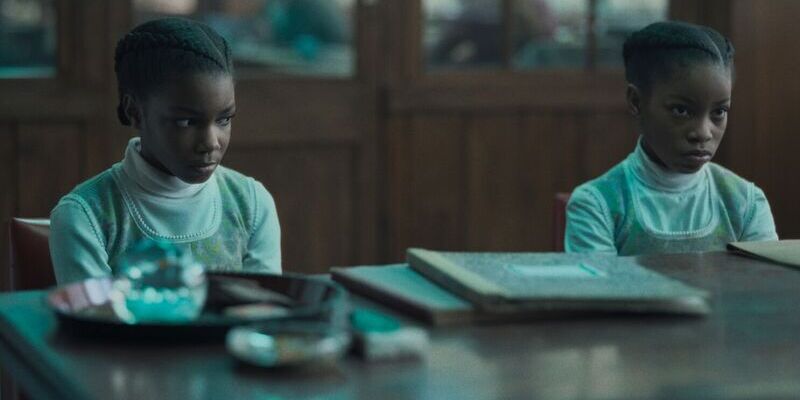
Review by
Eric Hillis
Directed by: Agnieszka Smoczynska
Starring: Letitia Wright, Tamara Lawrance, Leah Mondesir-Simmonds, Eva-Arianna Baxter, Jodhi May, Michael
Smiley

Some filmmakers make films in an attempt to give a voice to the
voiceless. Nowhere is this more literal than in Polish director
Agnieszka Smoczyńska's English language debut
The Silent Twins. Working with screenwriter Andrea Seigel, Smoczyńska tells the
story of Jennifer (played by Eva-Arianna Baxter as a child and
Tamara Lawrance as a teen) and June Gibbons (Leah Mondesir-Simmonds
and Letitia Wright), identical twin sisters born in Wales to
parents from Barbados in 1963. At a young age the twins stopped talking
to anyone but themselves and spent most of their time in their shared
bedroom where they churned out works of fiction, displaying a talent
beyond their years.

The Gibbons' story is a tragic one, a tale of outsiders who became
victims of a cruel era. After being shipped through various schools
throughout their teens, the girls began to flourish creatively when they
turned 18, pooling their money to buy a typewriter and self-publishing a
novel about a boy who drinks 300 bottles of Pepsi a day. It was at this
time that they began to interact with the outside world through a
relationship with a pair of unruly teenage American brothers. Thus began
their descent into petty crime, culminating in an act of arson which led
to their indefinite detention in England's infamous Broadmoor
psychiatric institute, then home to some of the country's most infamous
killers, including the Yorkshire Ripper, Peter Sutcliffe.
Smoczyńska celebrates the uniqueness of her subjects while damning the
uncaring society they were unfortunate to find themselves part of. The
first half of the movie plays like a rather joyous coming-of-age story,
albeit with unconventional protagonists. We're swept up in Jennifer and
June's ambitions to become writers, and we share their delight as they
slowly make advances towards what might have been a viable career in
better circumstances. Their doomed romance is similarly presented as
exciting, as Smoczyńska presents it from the POV of two young girls
finding their first love rather than a scornful adult looking back with
hindsight.

By the time the girls are interred in Broadmoor we've come to know and
like them so much that we feel the full weight of the tragedy. We're
left to curse a system that would rather lock up someone they find
troublesome than put in the hard work of trying to understand them.
There's a cruel irony to how the twins were caught by the police through
the confessional writings in their diary, their words damning them when
they should have been elevating them.
In reality the twins were identical but Smoczyńska has wisely opted not
to cast identical twins or to use CG to clone a single actress. Being
able to visually distinguish June from Jennifer allows us to invest in
their different personalities from the off, rather than spending much of
the film trying to figure out which twin is which at any particular
point. Lawrence and Wright are excellent as the teenage twins, as are
Baxter and Mondesir-Simmonds as their younger counterparts. The Gibbons
sisters spoke with a sibilant speech impediment, something which could
have come off as tacky were it not recreated so well by the four
actresses (interviews with June are available online if you have a hard
time believing that's how they really spoke).

Along with the standard biopic storytelling, Smoczyńska integrates
elements of the various fantastical stories the girls conjured up,
giving us magic realist images like that of a teenage boy drowning in a
pool of Pepsi. 1970s style stop-motion animation is employed to realise
some of their darker stories. It's a great choice, as I've always found
that style to be indefinably melancholy, and here it feels influenced by
the likes of Bagpuss, the sort of British childrens' TV shows that likely would have had an
impact on Jennifer and June in their youth. Bagpuss was a
series about lost toys waiting to be claimed, with the titular cloth cat
described as "a bit loose at the seams." I don’t know if Smoczyńska had
Bagpuss in mind, but it's certainly a clear allegory for
the tragic plight of Jennifer and June Gibbons.

